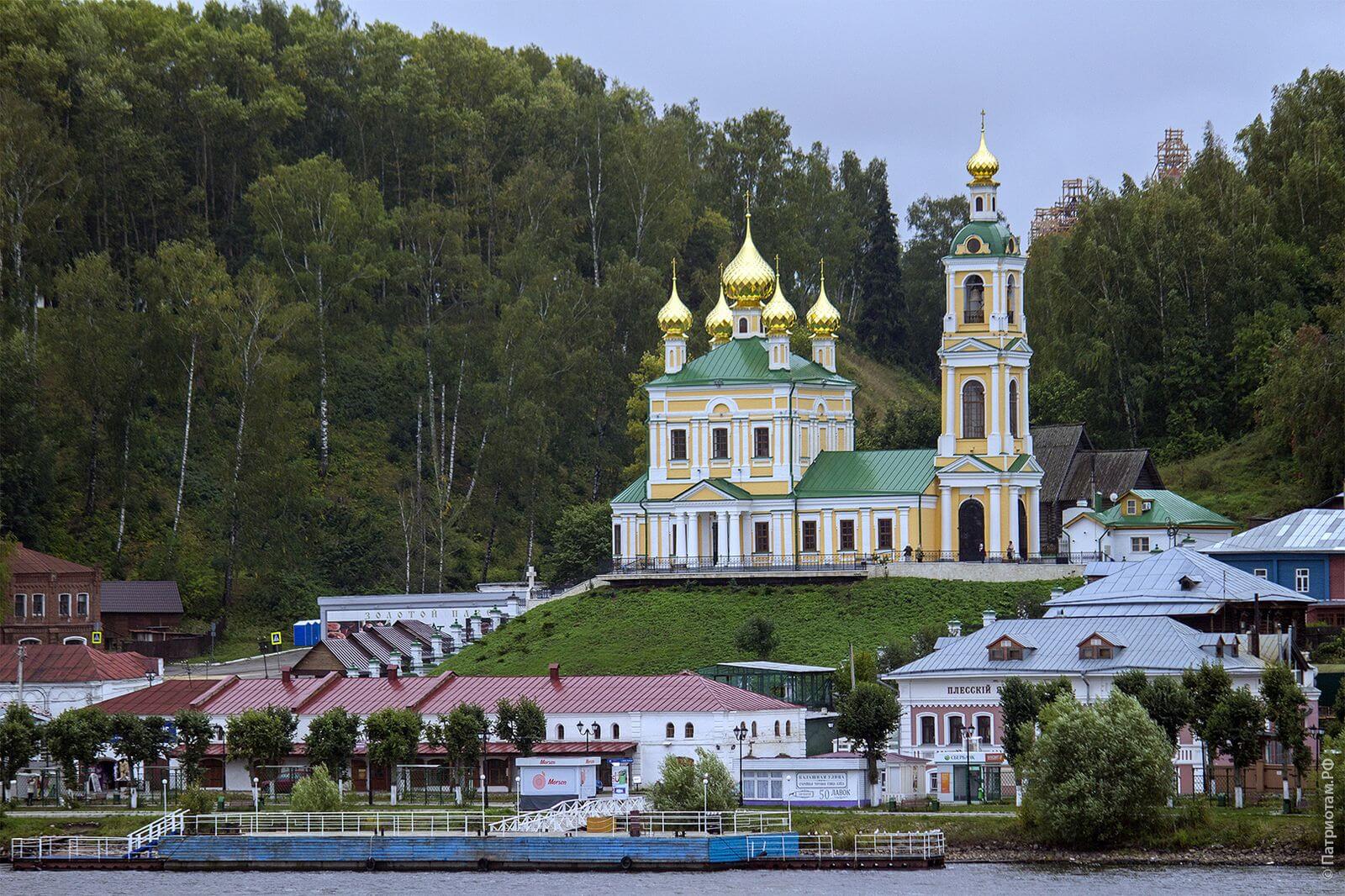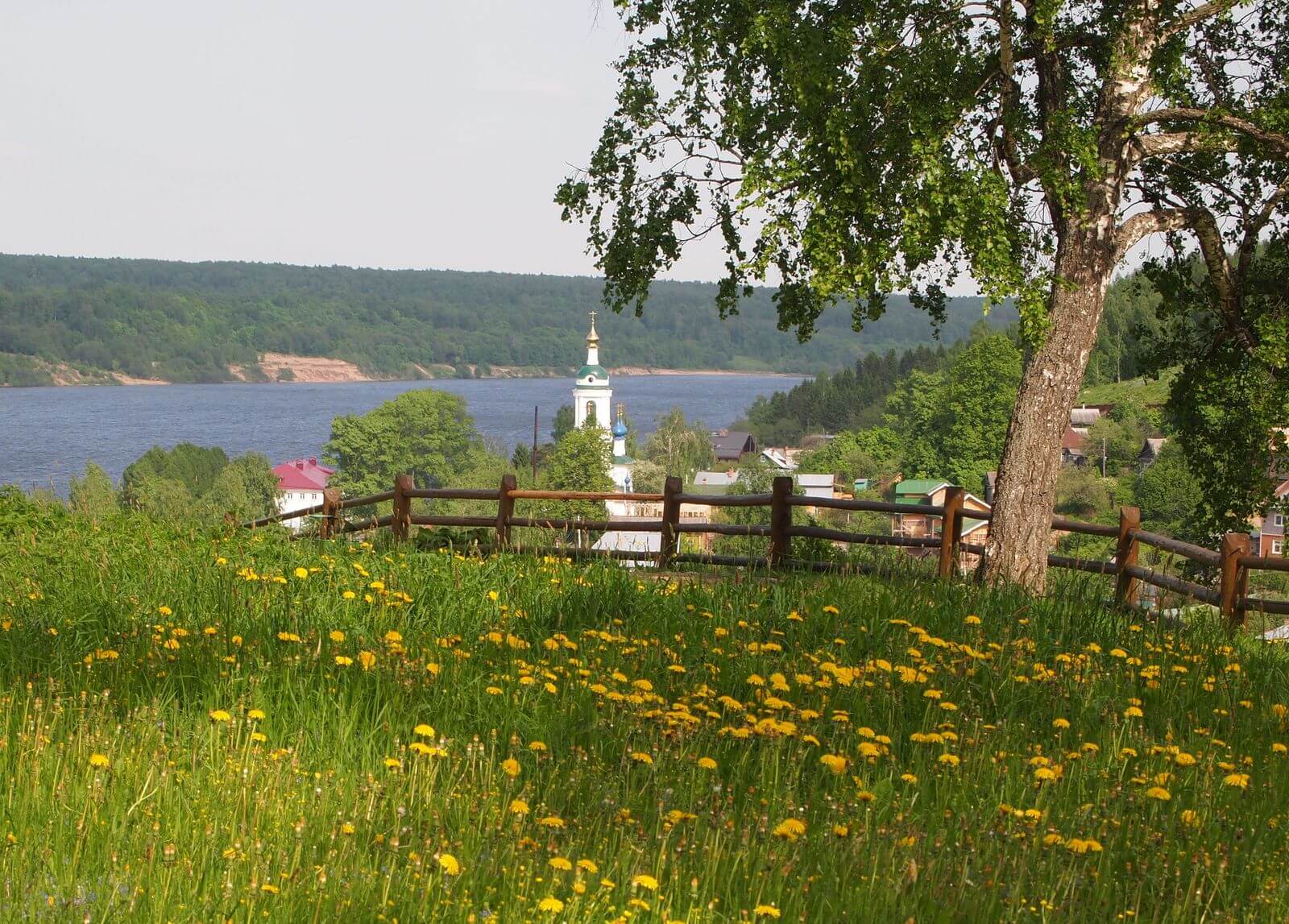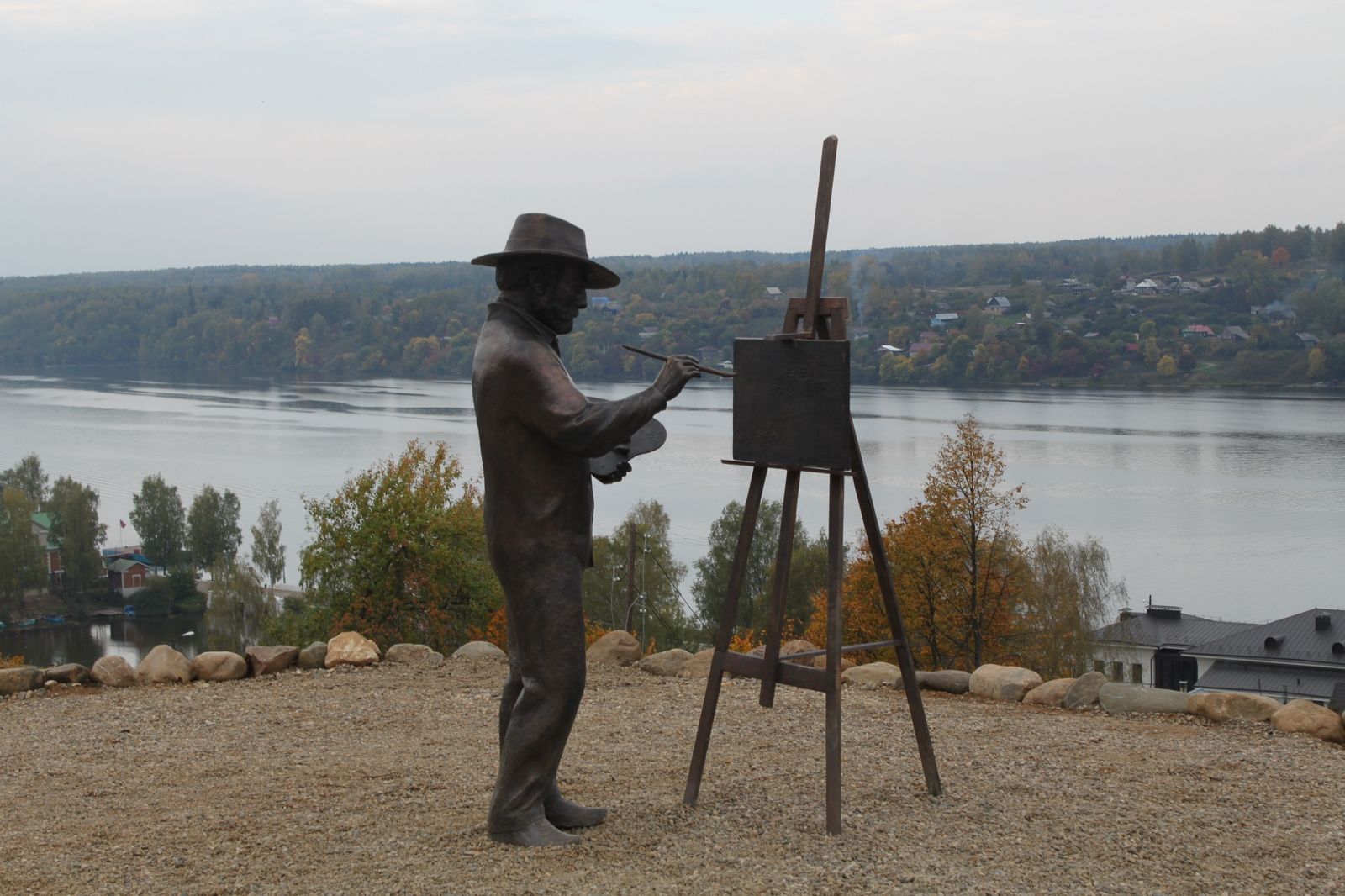A Tour Guide to Ples
Ples in 1832
The Chernetsov brothers, artists who travelled along the Volga in 1832, published a book of their travel notes, which contains a description of some interesting details of the life of Ples in the first half of the nineteenth century. "The residents took great advantage of the spring pouring out of the hills in great numbers. They channelled the keys through their yards, in which fish ponds were arranged, and the water passing through them continued its way through the canals where it could taken for home use… In these ponds, sterlet fish and other inhabitants of the Volga waters swim in clean spring water; the owner, when wishing to make a special treat to his family or a guest, would go out into the yard, choose a fish from his pond and ... into a pot in goes!".
The main events in the history of Ples.
- At the mouth of the Shokhonka River, which flows into the Volga, the Moscow Prince Vasily Dmitrievich 'the Dark 'founded the Pleso fort to protect Kostroma and Moscow from Tatar raids.
- Mahmut Khazi's army devastates Ples, most of the inhabitants are killed, the survivors are taken prisoner.
15th century. Next to the fort appear the Troitskaya and the Pribrezhnaya "Slobodas" - the Trinity and the Coastal Districts - and a Zarechnaya Sloboda, the Over-River District.
The beginning of 17th century. The Polish brigands of Pan Lisowski repeatedly ravage Ples.
17th-18th centuries. The town becomes a local trades and crafts centre.
1775. Ples becomes a county town.
1888-1890. I.Levitan paints his most famous landscapes here.
The end of the 19th century. Ples, branded as the "Russian Switzerland", is becoming a popular holiday destination.
Round the city.
Ples, one of the most beautiful Volga cities, is located in an area with a rather difficult terrain on coastal hills, and this makes it possible to distinguish three completely separate parts of it: the hilly Nagorny, coastal Pribrezhny and the Zarechny beyond the river.
The main streets of Ples are laid parallel to the Volga, and its numerous temples are located on hilltops. The most ancient area, from where the town began to grow, is the Cathedral Hill with a height of 70m. The semi-mythical city of Chuvil, the "bird kingdom", once stood here; archaeological excavations at the end of the 19th century found traces of human habitation here in very ancient times. It was on this hill that Vasily 'the Dark' built a wooden fort in the early 15th century; however, nothing has survived from this fort.
In the eastern part of the former fortress there is the Church of the Assumption of the Virgin, which was built in 1695 on the site of a burnt wooden one. No interior decorations or wall paintings in the temple survived to this day.
Next to the cathedral, near the the town council in 1910 on the 500th anniversary of the town, a monument to its founder Prince Vasily Dmitrievich was erected.
Under the Cathedral Hill there is a coastal area, the former Market District with its central Market Square. Here at the very start of the Embankment street on a high slope stands the five-domed Resurrection Church, built in 1817 to honour the victory over Napoleon. It is surrounded by market arcades built in the middle of the 19th century; close by is a fire station with a firewatch tower — an indispensable attribute of a Russian city of the 19th century. The Trinity District was once located next to the Market District; the Trinity Church has been preserved here - the summer one (1808), which boasts its wall frescoes from the 19th century, and the winter one (1828). You can cross the Shokhonka Bridge to the Transriver District, where the Peter and Paul Church stood on the namesake hill (built in 1841, yet recently burned down). There used to be a 16th century chapel next to it, depicted by Isaac Levitan in the "Over Eternal Rest" painting (that's why it is now called the Levitan Hill). In 1903 the chapel burned down, and in the 1980s a wooden Resurrection Church (1699) from the village of Bilyukovo was disassembled and moved to the same place.
The road running through the ravine will take you from the Levitan Hill to the Cold Hill (where the artist also often worked). Under the hills on the banks of the Volga there is a two-storey 19th century stone house, which belonged to the Old Believers merchants Groshev and Podgoryev. In the eastern part of the town you can find the St.Barbara Church with its multi-tiered bell tower (1821) and the Transfiguration Church (1849), located above the river on the site of an ancient monastery.
Museums.
Museum of Landscape Paintings, Lunacharsky str., 20.
Memorial House Museum of I.I.Levitan, Lunacharsky str., 4., An Exposition of the artist's living rooms, paintings and sketches by Levitan, Kuvshinnikova, etc.
Museum of Folk Decorative and Applied Arts, Lunacharsky str., 6. The exposition includes products from sewing factories, lacquer miniature in Palekh style, Kholui style, products of modern jewellers, shows the stages of creating lacquer boxes, and there is a souvenir shop.
Russian House, historical and cultural centre. Descent of Svoboda hill, 1. Presents the life of a medieval family and of a 19th century citizens' one.
I.Levitan in Ples.
Isaac Levitan first visited Ples at the age of 27 in 1888, during a trip along the Volga. The artist was so fascinated by the town that in 1888-1890 he lived most of the time here, together with his close friend S. P. Kuvshinnikova. According to her memoirs, he spent almost all his time "on landscapes", busy with painting the surrounding forests, Volga shores, lakes, country roads, peasant huts. Levitan created more than 40 paintings in Ples, including his most famous works: "On the Volga", "Evening bell", "Barges. Volga", "Golden Ples", "Birch grove", "Golden autumn. Slobodka", and others.
Published: 13.05.2016





